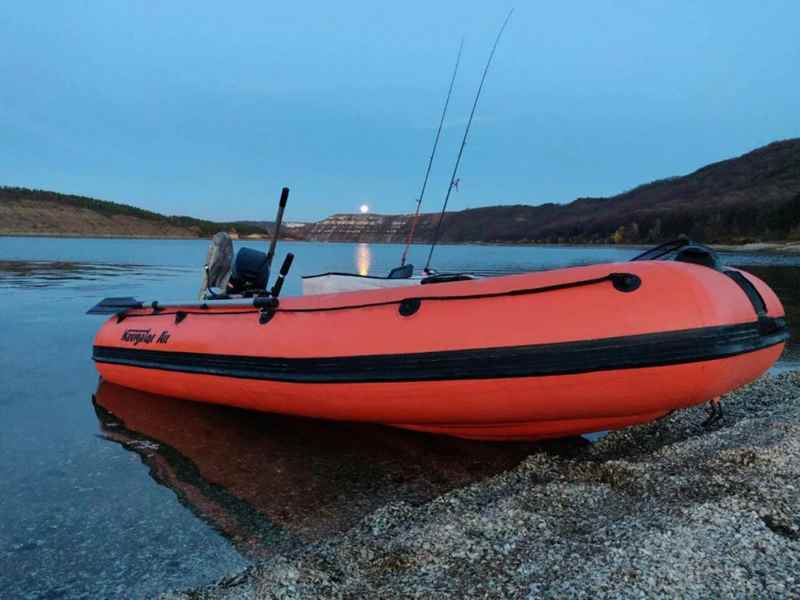Table of Contents
Introduction
Imagine setting sail on a serene lake or navigating the coastal waters, only to find that your boat is drifting away with every wave. The key to halting that drift and ensuring your boat remains where you want it is a reliable boat anchor. Anchors are not just about staying put; they’re critical for the safety and stability of your boat. Whether you’re fishing, swimming, or simply enjoying the view, an anchor secures your spot and provides peace of mind.
But not all anchors are created equal. The craftsmanship behind the best boat anchors can mean the difference between a day spent securely in place or one fighting to keep from running aground. When you choose a high-quality anchor, you’re investing in the seamless operation and protection of your boating ventures. From the materials used to the design, the right anchor caters to your specific needs, whether you’re in calm lakes or braving the open seas.
With this in mind, we will look into the top boat anchors available in the US, examining their features, and understanding their importance in the world of boating. We’ll be comparing types, dissecting features, and guiding you toward making an informed decision for your anchoring needs. Get ready to drop anchor on knowledge and set sail toward a more secure boating future.
Top Boat Anchors and Their Features
When setting sail, the anchor you choose is as critical as the boat itself. But what makes one anchor different from another, and how do you determine which is the best fit for your maritime adventures? Let’s dive into the world of boating anchors and examine some of the top choices available in the US, focusing on their unique features and optimal conditions for use.
Types of Boat Anchors
Boating anchors come in various shapes and sizes, each designed to perform best under specific circumstances. The three common types are fluke anchors, plow anchors, and grapnel anchors.
Fluke anchors, also known as Danforth anchors, have large flat surfaces that dig into the seabed, offering excellent holding power in mud and sand.
Plow anchors, resembling a farmer’s plough, pivot to dig into the sea floor and are known for their reliable hold in a variety of substrates, including grass and rock.
Grapnel anchors, with their distinct curved arms or “flukes,” are more compact and are ideal for temporary mooring on rocky or reef-filled bottoms.
Features of Each Boat Anchor Type
- Fluke Anchors: Typically made of lightweight materials like aluminum or galvanized steel, fluke anchors offer great holding power for their weight, which can range from a few pounds to over sixty for larger vessels.
- Plow Anchors: Constructed from heavy-duty metals such as stainless steel or galvanized iron, plowing anchors are heavier, providing strong hold and durability, with weights often ranging from twenty to over a hundred pounds.
- Grapnel Anchors: Usually the lightest of the bunch, grapnel anchors can be made from various metals and are easy to store due to their folding arms. Their holding power varies significantly based on design and substrate.
Each anchor type’s holding power is affected by its design, weight distribution, and the seabed composition. A heavier anchor does not always equate to better holding power; the design and suitability to the bottom conditions are often more important.
Best Applications for Each Boat Anchor Type
Choosing the right anchor or anchor kit depends largely on where you will be boating and the size of your boat. Fluke anchors shine in coastal waters with sandy or muddy bottoms, where they can easily dig in and resist being pulled out. They work best for small to medium-sized boats.
Plowing anchors are versatile, performing well in mixed bottoms and suitable for larger boats that require a more substantial hold. Grapnel anchors are perfect for kayaks, jet skis, and small boats when dealing with rocky bottoms or where a permanent anchor setup is not feasible.
Understanding the nature of the waterbed and the typical weather conditions you’ll face is crucial. For instance, a fluke anchor might not hold well in a sudden storm if it’s used on a rocky bottom, whereas a plowing anchor could maintain its grip. Similarly, in peaceful coves, a simple grapnel might be all you need for a day out on the water.
The choice of anchor also depends on the size of your boat. A small dinghy won’t need the hefty weight of a large plowing anchor, while a yacht could require the substantial mass and strength of a plow to stay put. It’s all about matching the anchor’s features with your specific boating needs to ensure safety and stability.
Benefits of Boat Anchors
Ensuring your boat stands firm against the capricious moods of the sea is a cornerstone of maritime safety. High-quality marine anchors play a pivotal role in this, offering more than just a piece of equipment; they provide assurance and a foundation upon which boating adventures are built.
Enhanced Safety through Effective Drift Prevention
A robust boat anchor is akin to a trusted friend who holds you steady in times of need. When the sea turns rough, a good anchor prevents your boat from drifting, which can lead to dangerous situations, such as collisions with other boats or being swept onto hazardous rocks. This is especially vital when you’re away from the helm, whether that’s catching some sleep at night or taking a break during a long fishing trip.
The science behind it is straightforward: the best anchors dig deep into the seabed, creating resistance that keeps your boat stationary. They are designed to work with various bottom compositions, ensuring that no matter if you’re over sand, mud, or rocks, your anchor grips the ground firmly.
Peace of Mind in Any Weather
Mooring your boat should not be a cause for anxiety. Reliable boat anchors serve as an insurance policy, offering peace of mind, particularly during unexpected weather changes. When dark clouds gather, and the wind begins to howl, knowing your anchor will hold fast allows you to focus on other necessary preparations to weather the storm. For those who love the tranquillity of the open water, this assurance is priceless. It means that even as the waves rise and the winds pick up, you can rest easy, secure in the knowledge that your anchor has you covered.
Improving Overall Boating Experiences
However, the benefits extend beyond just safety and mental comfort. They also enhance the overall boating experience. With a reliable boat anchor, you can explore more remote and beautiful locations, confident in the ability to stay put. It opens up possibilities for quieter moorings, away from crowded marinas, allowing you to enjoy the serenity of untouched waters. Moreover, the ease of setting and retrieving a top-notch boat anchor reduces the physical strain and time spent on anchoring, making your outings on the water more enjoyable and less labour-intensive.
In essence, a high-quality boat anchor affects every facet of your boating journey. It’s not merely a tool but a companion that stands sentinel over your vessel, allowing you to savour the joys of boating without the nagging worries about your boat’s security. Whether you are a seasoned sailor or a weekend enthusiast, investing in the best boat anchor is synonymous with investing in your passion for the water.
How to Properly Use Boat Anchors
Anchoring a boat isn’t just about dropping a heavy object into the water; it’s an art that mariners have been perfecting for centuries. Let’s dive into the step-by-step process to anchor your vessel efficiently and securely, keeping in mind the importance of choosing the right anchor for your boat size and the water conditions you’ll be facing in the anchoring guide below. Here you can see the step-by-step instructions for anchoring a boat as well as tips and tricks for selecting the right anchor for your boat.
Step-by-Step Instructions for Anchoring a Boat
- Select an Appropriate Spot: Look for an area that’s sheltered from strong winds and currents, with enough depth to allow your anchor to hold without the boat running aground.
- Understand the Bottom Conditions: Different anchors perform better on different seabeds. For instance, sandy or muddy bottoms require a different type of anchor than rocky or weedy beds.
- Prepare the Anchor: Ensure the anchor line (rode) is not tangled and that the anchor is ready to be lowered smoothly.
- Approach Slowly: Approach the chosen spot at a slow speed, pointing the bow into the wind or current.
- Lower the Anchor: Once in position, gradually lower the anchor over the bow, not stern, to prevent capsizing or swamping.
- Set the Anchor: After the anchor hits the bottom, slowly reverse the boat to help the anchor dig in until it is firmly set.
- Secure the Line: Once the anchor is set, tie off the line to a bow cleat and adjust the scope—ideally, a 5:1 ratio of line length to water depth.
- Check the Hold: After setting the anchor, monitor for a bit to ensure it’s not dragging and that your boat remains securely in place.
Tips for Selecting the Right Boat Anchor
- Match Boat Anchor to Water Conditions: If you’re heading into choppy waters with a soft seabed, a fluke anchor might be your best bet, while a plow anchor could be ideal for mixed seabeds.
- Consider Your Boat Size: Larger boats require heavier anchors to hold them in place effectively. Consult manufacturer recommendations for the ideal anchor weight for your vessel.
- Think About Storage: Make sure you have adequate space to store your anchor when it’s not in use, keeping it accessible but not obstructive.
Best Practices for Anchor Maintenance
- Rinse After Use: Saltwater can corrode metal over time. Rinse your anchor with fresh water after use to prolong its life.
- Regular Inspections: Before and after boating, inspect your anchor and its lines for any signs of wear or damage.
- Proper Storage: Store your anchor in a dry, ventilated place to avoid rust and corrosion.
- Replacement Parts: Keep an eye on your anchor chain or rope for signs of fraying and consider replacing parts as needed rather than waiting for them to fail.
By following these steps and tips, you’ll ensure that your anchor holds firm and keeps your boat securely in place, contributing to a safer and more enjoyable boating experience. Remember, proper boat anchoring is as much about the gear you use as the techniques you apply. In our previous sections, we emphasized the importance of investing in high-quality anchors to enhance safety and boating pleasure. Here, we’ve built upon that foundation by guiding you through the practical application of those anchors, reinforcing the connection between equipment choice and user methodology for the best possible outcomes on the water.
Conclusion
Choosing the best boat anchor is not just a matter of preference; it’s a critical decision that ensures your safety and enhances your boating experience. Throughout this blog post, we’ve navigated through the importance of stability on the water, dissected the unique features of various anchors, and provided guidance on using them effectively. Now, it’s time to pull these threads together and chart a course toward confident and secure boating adventures.
Remember, the right anchor acts like a steadfast friend in turbulent times. Whether facing unexpected storms or simply enjoying a serene sunset, a reliable boat anchor kit keeps your vessel firmly in place. We’ve explored fluke, plow, and grapnel anchors, each with its own set of features tailored for different conditions and boats. Weight, material, and holding power are not just specifications; they’re the lifeline that tethers you safely to the seabed. And as any seasoned sailor will attest, there’s immeasurable peace of mind that comes with knowing you’re well-equipped for whatever lies ahead.
Investment in High-Quality Boat Anchors
Investing in a high-quality boating anchor is investing in your safety and enjoyment. It’s the difference between a restful night’s sleep aboard your vessel and a restless one spent worrying about drifting ashore. High-quality anchors resist corrosion, withstand force, and dig deep when it matters most. They’re a one-time investment that serves you for many nautical miles. So, consider your boat’s size, and the waters you navigate, and choose an anchor that secures your boating lifestyle.












